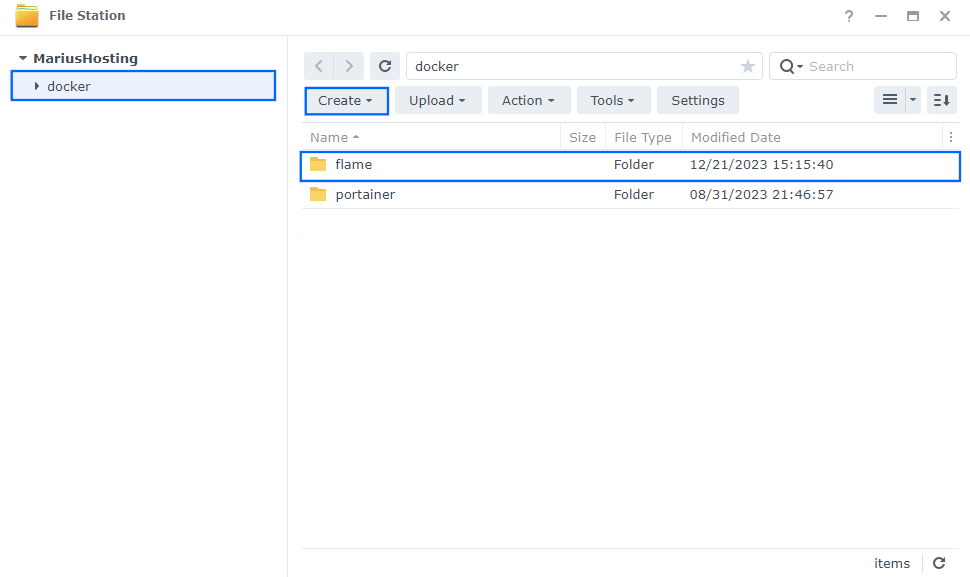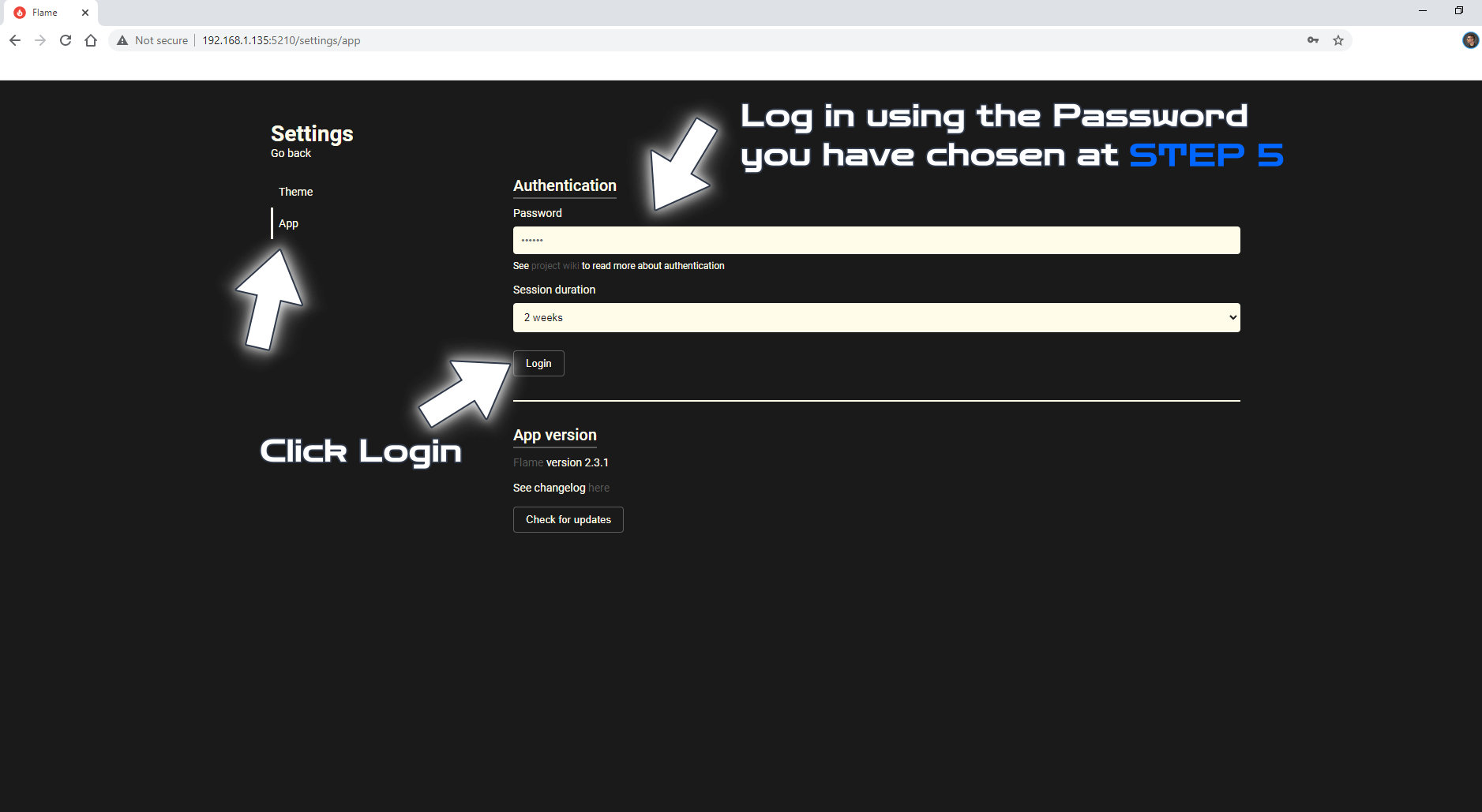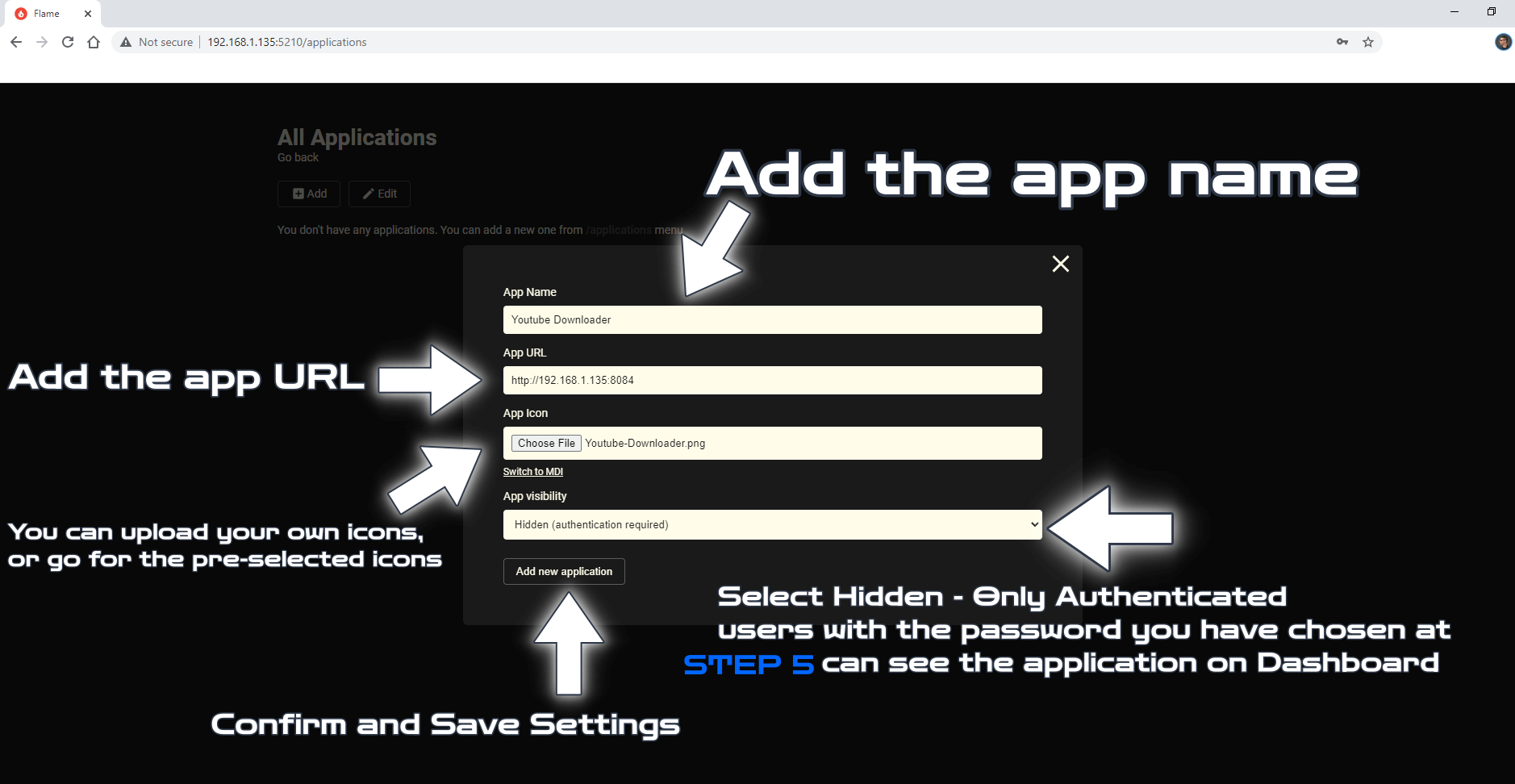
My previous guide for Flame involved the use of Task Scheduler. Today I’m offering a recommended and excellent alternative for installing the latest Flame version via Portainer. Flame is a self-hosted dashboard for your server that also doubles as a start page. Flame is very easy to set up and use which is why I like it so much. With built-in editors, it allows you to set up your very own application hub in no time; and no file editing is necessary. It allows you to add links to your docker applications, and you can upload your own icons, or go for the pre-selected icons. You can also add your favorite bookmarks for easy access. Flame is something you will find you can’t live without! In this step by step guide I will show you how to install Flame on your Synology NAS using Docker & Portainer.
STEP 1
Please Support My work by Making a Donation.
STEP 2
Install Portainer using my step by step guide. If you already have Portainer installed on your Synology NAS, skip this STEP. Attention: Make sure you have installed the latest Portainer version.
STEP 3
Go to File Station and open the docker folder. Inside the docker folder, create one new folder and name it flame. Follow the instructions in the image below.
Note: Be careful to enter only lowercase, not uppercase letters.

STEP 4
Log into Portainer using your username and password. On the left sidebar in Portainer, click on Home then Live connect. Follow the instructions in the image below.

On the left sidebar in Portainer, click on Stacks then + Add stack. Follow the instructions in the image below.

STEP 5
In the Name field type in flame. Follow the instructions in the image below.
version: "3.9"
services:
flame:
container_name: Flame
image: pawelmalak/flame
mem_limit: 4g
cpu_shares: 768
security_opt:
- no-new-privileges:true
restart: on-failure:5
ports:
- 5210:5005
volumes:
- /volume1/docker/flame:/app/data:rw
- /var/run/docker.sock:/var/run/docker.sock
environment:
PASSWORD: mariushosting
Note: Before you paste the code above in the Web editor area below, change the value for PASSWORD and add your own password. mariushosting is an example for a password. You have to insert your own password.

STEP 6
Scroll down on the page until you see a button named Deploy the stack. Click on it. Follow the instructions in the image below. The installation process can take up to a few minutes. It will depend on your Internet speed connection.

STEP 7
If everything goes right, you will see the following message at the top right of your screen: “Success Stack successfully deployed“.

STEP 8
🟢Please Support My work by Making a Donation. Almost 99,9% of the people that install something using my guides forget to support my work, or just ignore STEP 1. I’ve been very honest about this aspect of my work since the beginning: I don’t run any ADS, I don’t require subscriptions, paid or otherwise, I don’t collect IPs, emails, and I don’t have any referral links from Amazon or other merchants. I also don’t have any POP-UPs or COOKIES. I have repeatedly been told over the years how much I have contributed to the community. It’s something I love doing and have been honest about my passion since the beginning. But I also Need The Community to Support me Back to be able to continue doing this work.
STEP 9
The installation process can take up to a few seconds/minutes. It will depend on your Internet speed connection. Now open your browser and type in http://Synology-ip-address:5210 Click on the gear icon. Follow the instructions in the image below.

STEP 10
After you click on the gear icon, go to the App Settings. In the Authentication field add the password you have chosen at STEP 5 then click Login. Follow the instructions in the image below.

STEP 11
Start adding applications and/or bookmarks. Follow the instructions in the image below.

STEP 12
Add your App Name and App URL. You can upload your own icons, or go for the pre-selected icons. Select Hidden to hide your application under the password you have chosen at STEP 5. Click Add new application to confirm and save the settings. Follow the instructions in the image below.
Note: If you set App visibility to “Hidden“, only the users who log in using the password at STEP 5 can see the dashboard. Unauthenticated users can only see an empty dashboard and can’t add any apps or bookmarks.

STEP 13
You can change your current theme and choose different settings. Click on the gear icon at the bottom left of the page. Follow the instructions in the image below.

STEP 14
You can select your favorite theme, add Weather, remove the search bar from the dashboard, remove the welcome message, add a custom CSS etc. After the settings are saved, click Go back. Follow the instructions in the image below.

Your dashboard with the new theme!

Your dashboard without the search bar and welcome message – a very clean interface.

Note: At STEP 12, if you set App visibility to “Hidden“, only users who log in using the password at STEP 5 can see the dashboard. Unauthenticated users can only see an empty dashboard and can’t add any apps or bookmarks.
Enjoy Flame!
If you encounter issues by using this container, make sure to check out the Common Docker issues article.
Note: If you want to run the Flame container over HTTPS, check How to Run Docker Containers Over HTTPS. In order to make Flame work via HTTPS, it’s mandatory to activate WebSocket.
Note: Can I run Docker on my Synology NAS? See the supported models.
Note: How to Back Up Docker Containers on your Synology NAS.
Note: Find out how to update the Flame container with the latest image.
Note: How to Free Disk Space on Your NAS if You Run Docker.
Note: How to Schedule Start & Stop For Docker Containers.
Note: How to Activate Email Notifications.
Note: How to Add Access Control Profile on Your NAS.
Note: How to Change Docker Containers Restart Policy.
Note: How to Use Docker Containers With VPN.
Note: Convert Docker Run Into Docker Compose.
Note: How to Clean Docker.
Note: How to Clean Docker Automatically.
Note: Best Practices When Using Docker and DDNS.
Note: Some Docker Containers Need WebSocket.
Note: Find out the Best NAS Models For Docker.
Note: Activate Gmail SMTP For Docker Containers.
This post was updated on Wednesday / August 27th, 2025 at 5:38 PM
